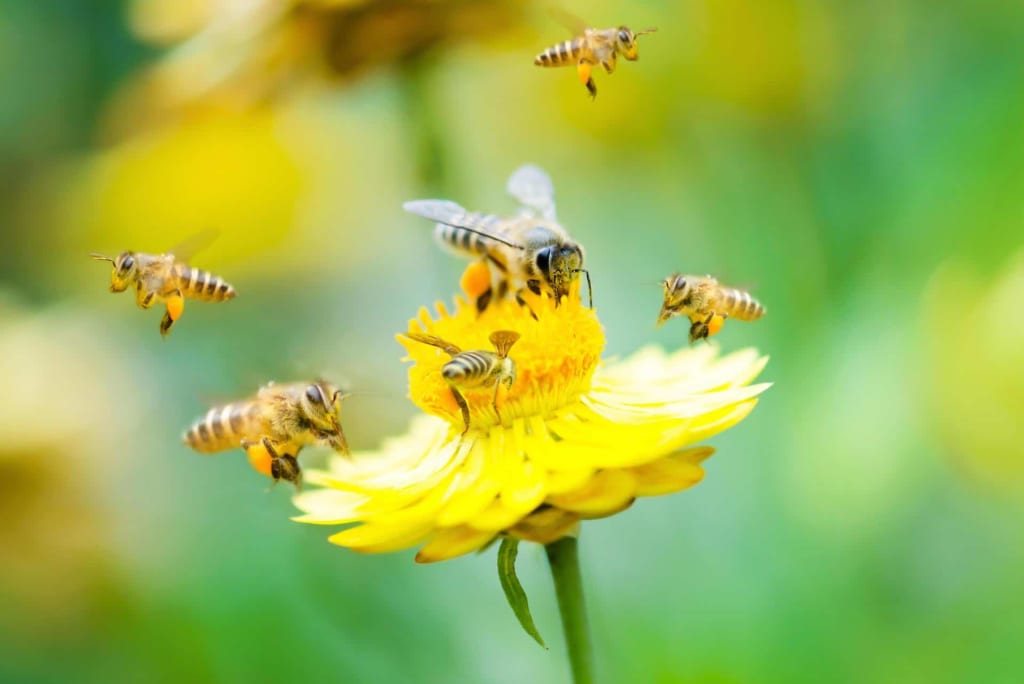SECRET ABOUT BEES
What we get wrong about keeping the bees

Year after year, there are reports highlighting potential doomsday scenarios for honeybees. A recent report from 2023 revealed that nearly half of all honeybee colonies in the United States had died the previous year. This is a significant concern as honeybees play a vital role in food production in the country. Consequently, they have become the face of a larger movement to save the bees. However, it is important to note that honeybees do not require saving. While efforts to protect them are commendable, our hyper-focus on this species neglects the thousands of other bee species that are at risk of extinction.
When we hear the term "bee," our minds often jump to the honeybee. This is because they are the bees that are commonly depicted in children's books and are considered a "Gateway B." However, there are over 20,000 species of bees in the world, with a little over 4,000 in the United States. Many of these species look nothing like the honeybee and are not native to the country. Farmers brought honeybees to the United States in the 1600s to use for wax and honey production. Over time, honeybees became a vital component of the billion-dollar agriculture industry in the country. Today, they pollinate a third of all the food Americans eat, including crops worth $15 billion, such as almonds, apples, and cranberries.
The decline in honeybee colonies since 2006 has caused concern among beekeepers and the public. The reasons for this decline include pesticides, disease, parasites, and mites. Additionally, the stress of being transported around the country can also contribute to colony loss. As demand for pollination services from honeybees has increased, so have the fees for those services. This has led to a rallying cry to save the European honeybee. However, it is important to note that honeybees are domesticated animals and are not globally threatened. From a global perspective, honeybee populations have increased by 80% since the 1960s. While honeybees are essential to the agriculture industry, they receive more than enough attention and funding. In contrast, thousands of other bee species are at risk of extinction.
Native bees are estimated to pollinate 80% of flowering plants worldwide, including many crops. Unlike honeybees, most native bees in the United States do not live in colonies or hives. They are solitary and burrow in wood, soil, or plant stems. Of the social native bees, the next year's queens overwinter, while all the current year's bees die once the weather gets cold. Native bees do not produce honey, but they are still essential pollinators. They are estimated to pollinate $3 billion worth of food in the United States alone. Unfortunately, many native bee species are declining due to pesticides, land loss, and climate change.
The decline in native bee populations is a significant concern as it coincides with the disappearance of native plant species, soil microbiota, and everything that depends on pollination in the food web. However, native bees do not receive the same attention or funding as honeybees. The solution is not to do away with honeybees, as they are essential to the agriculture industry. Instead, we need to embrace more bee diversity by limiting pesticide use and attracting native bees to our homes and farms. This will not only benefit native bees but also honeybees, as more complete pollination leads to larger and more symmetrical fruits.
One of the most significant threats to bees and other pollinators is neonicotinoid pesticides. These pesticides are already banned in Europe, and bills are slowly working their way through the United States. New York recently passed the Birds and Bees Protection Act, which bans the use of neonicotinoids except when using them on invasive species. Nationally, the Saving America's Pollinators Act has been introduced but is currently stalled in Congress.






Comments
There are no comments for this story
Be the first to respond and start the conversation.